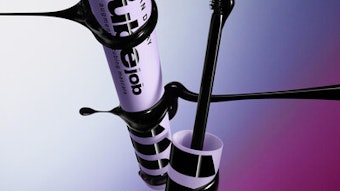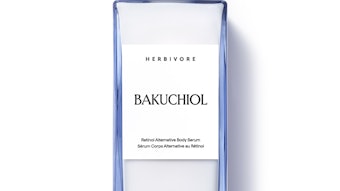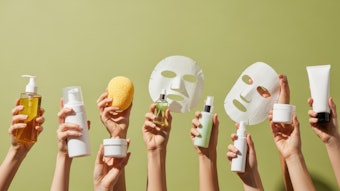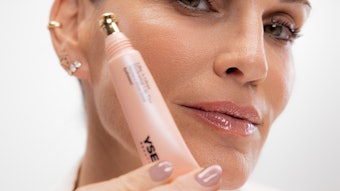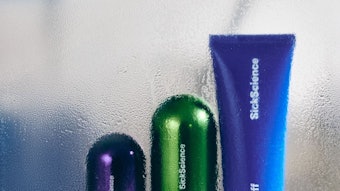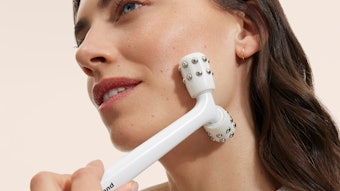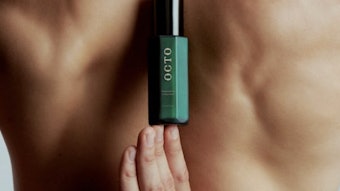
Wellness is a $3.72 trillion industry, according to the Global Wellness Institute (GWI), and is focused on enriching people’s minds, bodies and spirits with solutions that help prevent, mitigate and/or delay the impacts of physical and mental disease, environmental and societal stressors, and chronological aging.
Wellness has touched every industry, from real estate to nutrition to fitness and workplace initiatives—and anyone who’s been watching beer ads closely sees that even that market is reaching for the wellness consumer.
Massive Market Opportunity
According to GWI, beauty and anti-aging comprise the largest portion of the wellness marketplace, as seen here:
- Beauty & Anti-Aging ($999 bil.)
- Healthy Eating, Nutrition & Weight Loss ($648 bil.)
- Wellness Tourism ($563 bil.)
- Fitness & Mind-Body ($542 bil.)
- Preventative & Personalized Medicine and Public Health ($534 bil.)
- Complementary & Alternative Medicine ($199 bil.)
- Wellness Lifestyle Real Estate ($119 bil.) Spa Industry ($99 bil.) Thermal/Mineral Springs ($51 bil.) Workplace Wellness ($43 bil.)
When Global Cosmetic Industry recently interviewed Beth McGroarty, director of research for GWI, she said that wellness benefits from the high costs of health care and the clever positioning of healthy lifestyles as fashionable.
In fact, wellness marketing has done what conventional health professionals have so far been unable to do: make healthy decisions look and feel like the more fun choice.
Because wellness is such a broad and inclusive concept, we thought it would be valuable to dive into five key wellbeauty trends to understand how this is manifesting in the research sphere and the marketplace.
1. Beauty Sleep
Sleep-centric beauty concepts Who here got a good night’s sleep last night? The Sleep Association claims that 70 million US adults suffer from sleep disorders, including insomnia and apnea, but that doesn’t begin to address the number of adults—and children—who are simply not getting the eight to 14 hours required by various age tiers. This comprises a massive opportunity. Here are some ways brands and retailers have responded.
Why Sleep Matters
There is a reason that the phrase “beauty sleep” exists, as there is a direct correlation between quality sleep and skin condition. The emphasis here is on “quality” sleep, as it is in a particular stage of sleep where the skin actually regenerates itself.
In fact, there are five stages of sleep, and you have to go through a few to get to the good stuff. Stage one is light sleep, where breathing is normal. Deeper sleep can be found in stage two, where breathing slows down and the sleeper is more difficult to wake; however, it is stages three and four where skin regenerates.
These stages are known as slow wave, or delta, sleep, and are critical to healthy skin upon waking. Of course, stage give is the rapid eye movement (REM) sleep we have all heard of, and that is where dreaming occurs.
The reason why cells regenerate during stages three and four is because the body kicks in the production of human growth hormone (HGH) to help repair the body’s tissues. HGH is responsible for normal skin development. At a decreased rate, barrier function is impaired.
Sleep regulates hormones. In relation, cortisol drops drops during sleep, so lack of sleep increases cortisol. Increased cortisol breaks down collagen and elastin, increases inflammation, increases oil production and slows healing.
Lack of sleep can lead to reduced circulation. This results in less oxygen and nutrients getting to skin, causing it to look dull. It also results in lower wound healing. The lymphatic system also works at optimal capacity during sleep; therefore, lower lymph drainage results in accumulation of fluid or puffiness.
Product Innovation
Dermalogica Skin Care leveraged another wellbeauty trend we won’t address here—connected wellness—in developing its wellness app, the SoundSleepCocoon, which aims to support a better night’s sleep for its users. The app shares tips for better sleep, instructions for a DIY sleep massage and binaural beats.
Sleep concepts are also a hot area for retailers.
The beats reportedly use two different frequencies and a background audio track to help app users fall asleep. Critically, he app can be paired with Dermalogica's gel-cream, which utilizes motion-activated encapsulation technology to release essential oils as consumers move around during sleep.
Meanwhile, Dream Water has launched Dream Water Beauty, a beauty sleep shot incorporating healthy hair, skin, nail and collagen support.
The beauty shot is a 0-calorie, 2.5oz liquid shot formulated with the company's SleepStat Natural Blend of gamma-Aminobutyric acid (known as GABA), a neurotransmitter critical for minimizing what is called neuronal excitability; melatonin and 5-HTP (or 5-Hydroxytryptophan), an amino acid that plays a key role in the biosynthesis of serotonin; as well as beauty-related ingredients for the hair, skin/collagen and nails, including biotin, hyaluronic acid, bamboo silica extract, choline bitartrate and Juvecol, a proteoglycan derived from Japanese salmon nose cartilage, which reportedly supports joint health and the skin.
Of the men surveyed, 74% said the idea of taking a supplement for skin health or beauty was normal, compared to 58% of women.
Sleep at Retail
Sleep concepts are also a hot area for retailers. Last year, when CVS introduced its better-for-you concept, it spanned all of the retailer’s categories, including food and beverage, beauty, dietary supplements that offer hair and skin benefits, as well as an expanded sleep-focused selection.
While there were no beauty-specific brands in the sleep section as of launch—which may have been a missed opportunity for cross-category retailing—there was a more holistic view of sleep that included sleep supplements with melatonin, humidifiers, sunlight simulators, white noise machines and therapeutic pillows.
Soon after, conceptual retailer Story—which has since been acquired by Macy’s—launched its Beauty Story theme in cooperation with Coty. The shop freely mixed mass beauty brands and prestige beauty in one space and notably integrated a wellness angle by co-curating a sleep-centric space in cooperation with Smart Nora, which produces a snoring solution technology, as well as Recliner pajamas and Shhh Silk pillowcases and pillows. These were retailed right alongside skin care and other beauty-oriented products, offering a more holistic concept for shoppers.
Clock Genes and Beauty
So, how do you improve sleep with a topical ingredient? You can’t, but, you can improve the look of skin that has experienced little sleep.
Scientists have found a way to tap into the circadian rhythm of skin cells, largely due to research surrounding the clock genes. In 2017, the Nobel Prize for Physiology and Medicine was awarded to Jeffrey C. Hall, Michael Rosbash and Michael W. Young for their identification of the clock gene, which controls the daily biological rhythm of the cell.
Sleep Ingredient Innovation
So, let’s talk a little about ingredient innovation that control the biological rhythms of the cell. As we know, blue light has been found to disrupt the circadian rhythm.
A South Korean plant Lespedeza capitata was found to resynchronize the circadian rhythm of skin cells to counter the effects of blue light. The extract was shown to reduce puffiness, reduce dark circles and improve the complexion.
Another extract, Vitis vinifera, was found to enhance the action of clock genes to enhance biological rhythm, resulting in increased collagen production, barrier function and brightness.
Hydrolyzed yeast protein is said to maintain the proper synchronization of day to night regulators to improve skin renewal and protection.
2. Inside Out
Nutricosmetics, supplements, ingestibles—or however you care to label this category—is far from new. However, the confluence of wellness and beauty has finally given the segment its moment to shine.
While there remain challenges similar to traditional pharmaceuticals—namely user consistency in taking the recommended dose as suggested—there’s no doubt that the ease, convenience and portability of ingestible products is attractive to today’s consumer.
The Research into Beauty from the Inside Out
A PlOS One study from the University of Sydney in 2016 showed how macronutrients affect the skin. Skin degradation was reduced when mice consumed 50% protein, 25% carbs and 25% fats.
Skin, hair and nails are protein, so the body needs protein as the structural backbone to these. Zoe Draelos, on a podcast on Cosmeticsandtoiletries.com, noted that the most common problem she sees is people who are on an incomplete diet having brittle nails and hair because of lack of protein.
In addition to macronutrients, it has been proven that eating antioxidants is important to preventing oxidation of the body and skin. Scientific studies have shown that the consumption of anti-glycation endproducts (AGEs) leads to the premature aging of the body and the skin.
Not One-Size-Fits-All
We know that food and supplementation can provide beauty benefits, but it’s really not a one-size fits all approach.
The amounts needed differ by age and, of course, condition severity. Also, it should be noted that innovation isn’t abounding in nutricosmetic ingredients. That is because new foods and vitamins for the large part aren’t entering the market.
Rather, innovation comes to us in product form, delivery or sourcing a traditional ingredient from global cultures.
Recent research has looked into Chinese ginger, or fingerroot (Boesenbergia pandurata), and found it to have additional beauty benefits. It was previously shown to suppress photoaging when taken internally. Through its panduratin A, a natural adenosine monophosphate-activated protein kinase (AMPK) stimulant, it was shown to increase hydration and decrease wrinkling.
Nutrinovate launched its resveratrol line (Reserol), which uses a Functional Film Technology to deliver the resveratrol on the inside of the cheek. It boasted ease of use, bioavailability and direct dissemination into the bloodstream.
In 2017, Robertet introduced its Beauty Shot Concept containing Lipowheat, a natural ingredient concentrating phytoceramides and glycolipids. Lipowheat is said to improve skin hydration, radiance and reduce wrinkles.
Another recent study showed that combining carotenoids with sunscreen will have a synergistic effect. The study showed that carotenoids can help protect skin from oxidative stress.
Ingestibles for Men
While we spend much of our time discussing women in our research, a recent study from Lycored, a New Jersey-based producer of carotenoid-based wellness products, suggests this mindset has not swayed.
37% of men said they want to spend less time on their skin care regimens
Four hundred and eighty consumers in the U.K. and France were surveyed on their attitudes surrounding skin care, health and appearance. Of the men surveyed, 74% said the idea of taking a supplement for skin health or beauty was normal, compared to 58% of women.
In addition, 37% of men said they want to spend less time on their skin care regimens, compared to 28% of women; and surveyed men were reportedly no less likely than women to pay for quality products, with 26% in both groups spending more than the equivalent of $27 a month on skin care.
Ultimately, supplements allow men to streamline their grooming routines with an easy, no-fuss product format that is likely familiar to them from the realms of nutrition and fitness.
Brands are getting increasingly creative with their product formats.
Not an Afterthought
Tula has also taken a lead in the beauty-from-within movement, launching its Daily Probiotic & Skin Health Complex supplements. The product reportedly aids digestive and skin health with a mix of ceramides for skin moisture retention, vitamin C for skin tone and texture, Lactobacillus rhamnosus GG for digestive health, Lactobacillus plantarum for anti-aging benefits, and Bifidobacterium Infantis for improved metabolism to prevent after-meal bloating.
CEO Julia Straus notes that supplements are no longer an afterthought for brands because they are easy for consumers to incorporate into their everyday wellness routines, signaling a new way to integrate beauty into people’s regimens.
Interestingly, it is currently difficult to locate many ingestible beauty products designed for men, though many retailers offer female-centric or gender-neutral ingestibles in channels dedicated to male consumers.
When Global Cosmetic Industry interviewed Carlotta Jacobson, president of CEW, about the organization’s 2018 crop of awards finalists, she said, “For the first time, we are presenting an award for a nutricosmetic product—an ingestible, nutritional supplement that supports the function and structure of the skin, hair and/or nails. Consumers are increasingly linking their expectations about beauty to health and wellness—and the industry is responding.”
The CEW finalists in the category for this year span a range of brands, claims and formats, including: Goop’s Morning Skin Superpowder, HUM Nutrition’s Hair Sweet Hair supplement, OUAI (way) Haircare’s Thinning Hair Supplements, Perricone MD’s Skin Booster supplement, Sakara Life’s phytoceramide-rich Beauty Chocolates, and Skinade’s Better Skin from Within collagen drink.
“Polypodium leucotomos extract 240 mg taken twice daily for 60 days was a safe and effective means for reducing the damaging effects of ultraviolet radiation.”
Ingestible Sun Care
Brands are getting increasingly creative with their product formats.
For instance, Sundots, a brand of bite-sized gummies funded on Kickstarter, reportedly helps to strengthen the skin’s UV resistance from the inside out with the inclusion of Polypodium leucotomos fern extract, which the company describes as a key active ingredient in resisting UV damage.
A 2015 dermatology study on the extract’s safety and effects on counteracting UV radiation exposure reportedly concluded, “Polypodium leucotomos extract 240 mg taken twice daily for 60 days was a safe and effective means for reducing the damaging effects of ultraviolet radiation.”
And Sundots cites a 2017 study that “found 76% fewer new sunburned cells in patients who took polypodium.”
Other brands have leveraged the ingredient for supplement-format products, including Heliocare’s Sun Protection Pills, which reportedly improve the body’s tolerance to UV rays to prevent sun-damaged skin. That brand is clear to warn, however, “Although Heliocare tablets aid in preventing sun damage, they do not replace sunscreen. We recommended applying a topical sunscreen with SPF for maximum results.”
Hum Nutrition also includes the ingredient in its Turn Back Time Anti-Aging Supplement, which the brand claims protects the skin against UV damage, stress and pollution.
Sundots’ twist on the segment is to make the supplement a fruity, chewable product, rather than the somewhat less friendly and palatable supplement format, which can be an impediment to those who have difficulty or an aversion to swallowing pills.
3. Simply Beautiful
Jony Ive, the industrial designer behind many of Apple’s iconic products, has habituated us to clean, minimalist designs and experiences that serve to conceal their complexity. Like wellness, simplicity now spans every industry and every element of design. Indeed, it is at the core of the clean label/transparent food and beverage revolution.
Simplicity also provides relief from information-overloaded consumers who in turn respond well to packaging with ample white space and simplified product names that explain precisely what a product is and does.
As Kseniia Galenytska, senior analyst, beauty and fashion, Euromonitor, has pointed out, one needs to look no further than the Rx Bar, which lists its key ingredients and “No BS” claim on front of the packaging, signaling both simplicity and transparency. Notably, Rx Bar was a complete failure in its market until it changed one thing: its packaging. That alone changed its narrative and catapulted the brand to the top tier of the lucrative bar category.
“This minimalist, fresh, and clean fragrance is hypoallergenic and ideal for those who don’t normally wear perfume..."
S.W. Basics has taken this concept to heart and launched a range of products with key ingredient counts in the single digits. Its 3 Ingredients Salve calls out its trio of materials—sunflower oil, cocoa butter and carnauba wax—on the front of the packaging.
On the market, simplified brands have achieved success. Larissa Jensen, The NPD Group’s executive director and beauty industry analyst, has pointed out that prestige single-note fragrance sales grew 13% last year, compared to the 6% for the total category.
This trend has overlapped the no-fragrance fragrance movement, which seeks to add a scent without making the wearer smell like any one particular thing. One recent example is Juliette Has a Gun’s “Not a Perfume,” which comprises a single note, Firmenich’s Cetalox, which is typically used as a base note.
According to the brand, “This minimalist, fresh, and clean fragrance is hypoallergenic and ideal for those who don’t normally wear perfume … Here [Cetalix] plays the lead role for a fragrance that will easily satisfy the most difficult tastes, and particularly those preferring discretion over complexity.”
How to Formulate Simply
The key, of course, to formula simplification is to choose ingredients that do more. To that end, formulators are looking for multifunctional cosmetic ingredients, and raw material suppliers have answered that call.
When chosen properly, silicone surfactants lower the surface tension of both oil and water phases, resulting in formulations with improved spreadability, wetting properties and desired esthetics.
Elsewhere, a cold process emulsifier has been created using cetearyl alcohol, glyceryl stearate, ceteth-20, sodium polyacrylate, hydroxypropyl starch phosphate and Crambe abyssinica seed oil to facilitate the formulation of multiple textures, from fluid to butter. It is an O/W emulsifier based on Pickering emulsion technology, which supports cold development and reduces environmental impact and processing costs. Its lipid crystals are finely divided and interfacially absorbed, allowing for stabilization of high oil concentration and the reduction of skin irritation. Resulting formulations are highly moisturizing and have barrier repair capabilities.
A naturally derived, highly pure butylene glycol has been created from a sustainable and renewable sugar fermentation process. The resulting material can be used in a number of product applications including skin care, where it serves as a humectant, preservative booster, solubilizer or stabilizer.
Recently, a pentylene glycol (1,2-alkanediol) was launched as a multifunctional cosmetic ingredient for skin and hair, with function such as emulsion stabilizer, solvent and a broad spectrum antimicrobial. It is also an excellent skin moisturizer and reduces emulsion particle size which helps achieve better stability and improves formulation esthetics. This works synergistically with preservatives to enhance the bioavailability of cosmetic actives as it also improves water-resistance of sunscreen formulations.
4. Environmental Defense
Increasingly, the concept of environmental defense is evolving into what Euromonitor analyst Maria Coronado Robles describes as “protective skin care.”
This includes UV protection, supported by UV filters, defense against air and light pollution, supported by anti-pollution and blue light breakthroughs, and holistic skin protection, led by the probiotic/microbiome revolution. (We’ll get to the microbiome next.)
Products in the protective skin care segment include:
- A supplement, Hum Nutrition’s Turn Back Time Anti-Aging Supplement, which the brand claims protects the skin against UV damage, stress and pollution
- Emma Hardie’s Plump & Glow Hydrating Facial Mist, an anti-pollution formula described as “an ultra-fine hyaluronic facial mist that helps boost hydration, plumpness and luminosity and helps protect against pollution and environmental damage
- Thisworks’ evening detox clay mask, which is an “anti-pollution purifying mask with malachite and Kaolin clay for a 10 minute skin detox
- Supergoop! Unseen Sunscreen Broad Spectrum SPF 40, “a daily SPF that grips makeup while delivering broad-spectrum SPF 40 protection against UVA, UVB, infrared, and blue light”
- Murad’s City Skin Age Defense Broad Spectrum SPF 50 PA++++, a mineral sunscreen that “features environmental protection technology [that] protects skin from five main causes of skin damage: UVA, UVB, pollution, blue light from devices, and infrared radiation.”
Ingredient Innovation for Environmental Aggressors
There has been a number of ingredient introductions that help protect the skin from blue light and environmental aggressors.
A combination of lemon myrtle (Backhousia citriodora leaf extract) and glycerin was recently introduced to protect squalene from urban skin agressors. It does so by reducing pro-inflammatory cytokines, decreasing sebocyte differentiation and lipid accumulation, and rebalancing oily skin content to reduce shine.
Another ingredient from a concentrated extract of sugars from the natural rhizomes of butterfly ginger, or Hedychium coronarium, is said to illuminate skin’s authophagy potential. The ingredient acts upon the cell's autophagy processes of maintenance and detoxification to brighten skin, and protect from blue light and pollution.
An extract of green citrus unshiu is said to serve as an anti-pollution active by protecting it from both indoor and outdoor pollution. It is enriched in highly potent molecules: synephrine, hesperidin and naringin, which play a major role in regulating the immunomodulation and decrease hypersensitivity conditions. It controls hypersensitivity triggered by indoor pollution. It tackles immunomodulation and helps in controlling atopic-prone skin by targeting eotaxin and eosinophils recruitment in the skin, which are key factors in the skin's immune response.
Another extract from the same company uses Japonese camellia to protect skin from pollution. It blocks the cell’s aryl hydrocarbon receptors (AhR) that are normally triggered by pollutants such as PM10, PM2.5 PAHs and heavy metals, in order to prevent the production of free radicals that cause oxidative stress. It also reduces the activation of MMP-1 genes and increases the production of collagen.
A green algae extract (Scenedesmus rubescens) has been created that protects skin from UV and blue light induced damage. It reduces the number of sunburn cells and oxidative stress. Moreover, it stimulates collagen III production and improves overall skin appearance of skin.
Finally, another combination of olive leaf extract, Korean date and vitamin C, among other ingredients was shown to manage cellular recycling, in addition to protecting skin from blue light.
5. Holistic Microbiome
The gut/brain axis was recently covered in a podcast on Cosmeticsandtoiletries.com with Stephanie Dhanda from Johnson & Johnson, based on her company’s research partnership with Holobiome to investigate the microbiome and its impact on sleep.
Skin and the gut microbiome are the two most studied microbiomes. We don’t know if you can change the diversity of bacteria in the gut and see skin effects, but we do know you can change diversity of microbes in the gut to promote better sleep and therefore better skin.
Gut/brain axis is the pathway in which the gut and the brain communicate. If you eat a lot, the gut signals the brain that you are full. If you are stressed, you experience distress in the gut.
What does this mean for beauty?
Microbiome-friendly Innovation
Like the ingestibles category, microbiome-friendly beauty concepts have benefited from consumer awareness generated by another category, namely foods and beverages. The list of potential microbiome-friendly routes is diverse and complex, including prebiotics, which can feed probiotics; live probiotics; deactivated/dormant probiotics; postbiotics such as hyaluronic acid and lactic acid; and more.
A collaboration between Amway and Microbiome Insights has identified two Corynebacteria species that could serve as potential targets in the effort to improve skin care, particularly anti-aging skin care.
In the first study, 495 healthy men and women ages nine to 78 were found to have two separate Corynebacteria species—one associated with the older participants, and one associated with younger. The "old skin" bacteria replaced "young skin" bacteria around middle age (40-49), and the two bacteria did not exist simultaneously.
A natural fermented oat active range consisting of three oat based active ingredients was shown to accelerate microbiome recovery.
In a follow-up study with 155 participants (men and women), observations from the first study were confirmed. Additionally, the "old" Cornyebacterium were associated with wrinkles, skin redness and age spots. Complete data from Amway’s Microbiome Initiative research is slated to be published in 2018.The discoveries could benefit not only the scientific community and its understanding of the microbiome, but also consumer health and wellness.
Another launch involved is a polyfructose extracted from the chicory root and enzymatically purified towards a chain length of 10 fructose units and higher. This ingredient preserves the healthy look of the skin by balancing the human skin microbiota. It also balances the microorganism responsible for body odor.
A natural fermented oat active range consisting of three oat based active ingredients was shown to accelerate microbiome recovery, provides skin smoothing, re-plumping and firming properties and significantly improve complexion and skin radiance.
Finally, two seaweed complexes were recently introduced to promote microbiota homeostasis. Both combine seawater with two seaweeds (Laminaria digitata and Chlorella vulgaris) and saccharide isomerate, and the ingredients were shown to reverse the imbalance induced by stress on the skin’s microbiota. They also were shown to reduce skin redness.
Challenges to Microbiome-friendly Beauty
Probiotics face consumer confusion, a lack of standardization among ingredients and microbiome-supporting strategies, as well as technical and regulatory barriers, including EU limitations on microbe levels per ml of product.
There still appears to be some debate about which microbiome-supporting work best, what constitutes a healthy and diverse microbiome, and how that health and diversity is best measured. That hasn’t stopped microbiome-supporting concepts from hitting the market from like GlowBiotics MD’s topical probiotic skin care, Tula’s probiotic skin care and Gallinée’s active probiotics for sensitive skin, which recently closed its Series A financing with a big push from Unilever.
Science-forward Marketing
Most brands take a traditional marketing approach to their microbiome-focused products, leaving the fine print of the science out of most messaging. However, two brands—Mother Dirt and JooMo—are decidedly science-forward.
JooMo is actively conducting clinical trials with the Medical University of Graz in Austria to determine the brand’s impact on users’ microbiome diversity and, therefore, skin health. The brand presents the technical details of skin microbiome diversity and beneficial bacteria in the foreground of its marketing as part of its mission toward transparency and ethical corporate behavior.
The company made a splash four years ago by introducing its technology in a New York Times story by Julia Scott, “My No-Soap, No-Shampoo, Bacteria-Rich Hygiene Experiment.”
Meanwhile, Mother Dirt, an early adopter in the “bacteria friendly” personal care world uses the research into the benefits of ammonia oxidized bacteria on skin health. The company’s own website notes that these bacteria “convert ammonia to nitrite, an antimicrobial compound, and nitric oxide, a well-documented signaling molecule in the inflammatory process,” and therefore act as “peacekeeper bacteria” that offer a broad range of hygiene—and potentially health—outcomes.
The company made a splash four years ago by introducing its technology in a New York Times story by Julia Scott, “My No-Soap, No-Shampoo, Bacteria-Rich Hygiene Experiment.” The piece spurred conversation, debate and created a wave of early adopters who were attracted to Mother Dirt’s positioning as a functional, rather than pampering, brand.
As these trends show, new science, creative product formats and changing consumer behaviors are driving innovation in wellness beauty and personal care.
